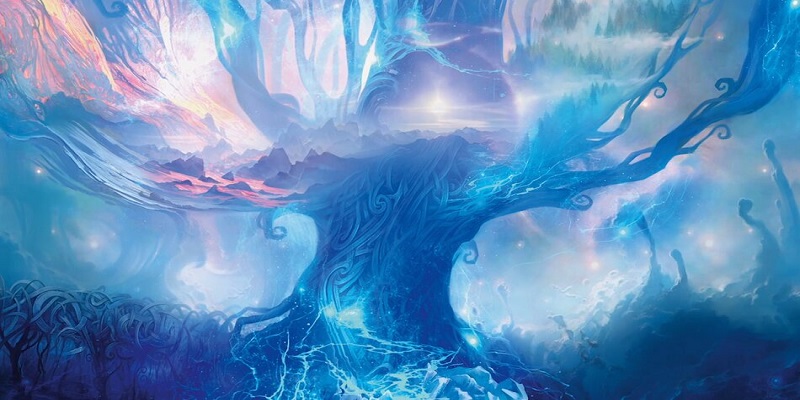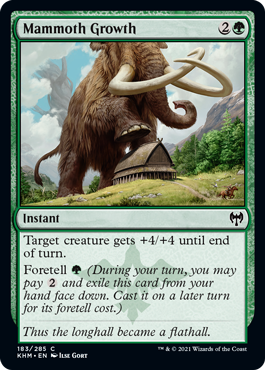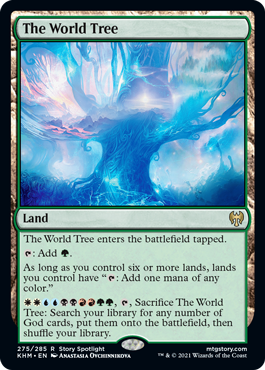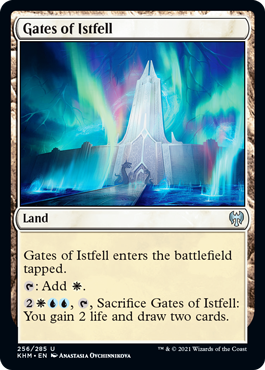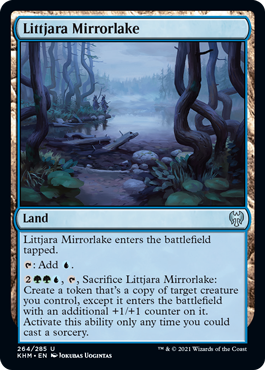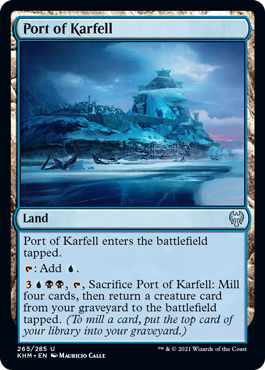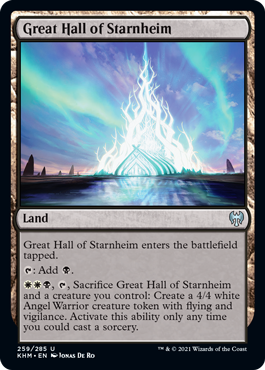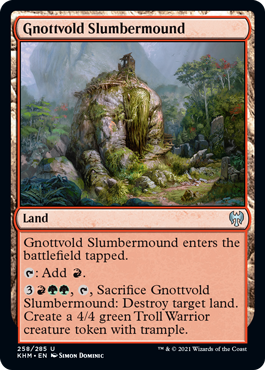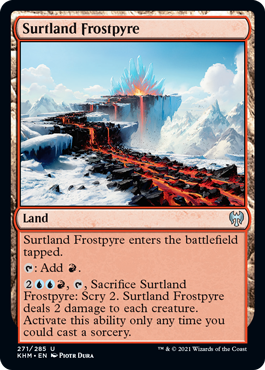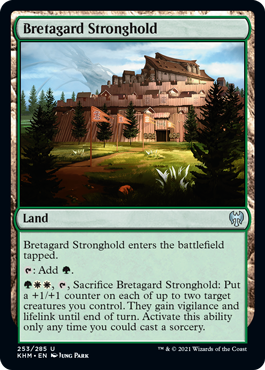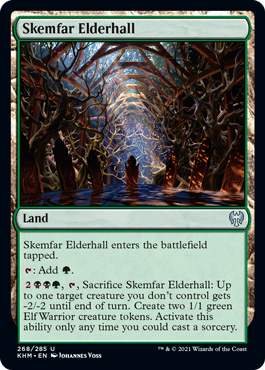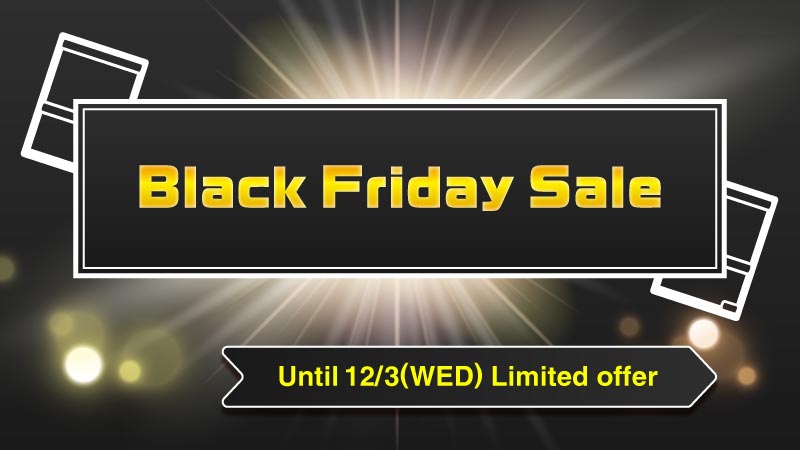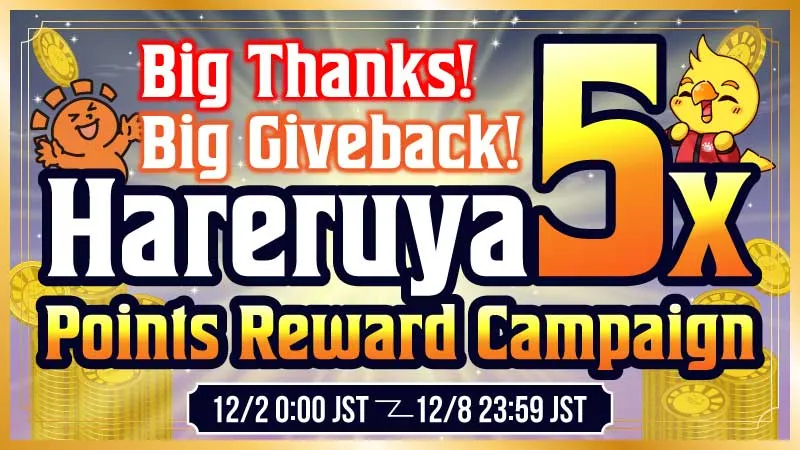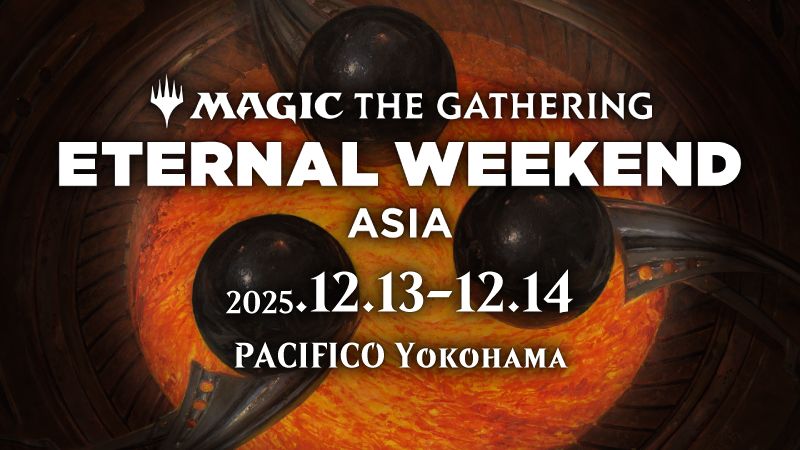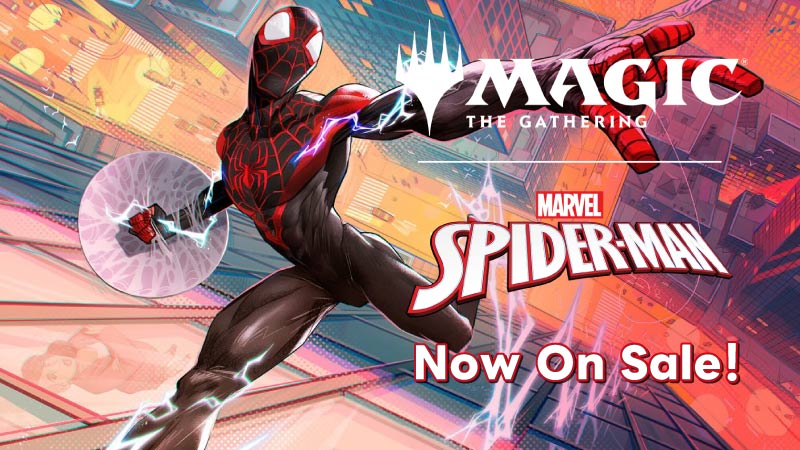Introduction
The newest expansion takes us to Kaldheim, a Plane we haven’t visited before. In this article, I’ll guide you through this new world. It’ll be an introduction to Kaldheim with a focus on Limited, so you can play your first events with the new set prepared.
Kaldheim Mechanics
Every set brings us some new as well as some returning mechanics. Fully understanding what these new mechanics do and how they’ll influence Limited gameplay will give you a nice advantage in the early days of the set’s release.
Foretell
Any time during your turn, you can pay two mana and exile a card with Foretell face down. Then, on a future turn, you can cast that card from exile by paying the Foretell cost rather than paying its mana cost.
Most Foretell cards are cheaper or have an additional effect when Foretold. For Limited, Foretell will likely mean two-drops are less good, as you’ll often want to spend turn two Foretelling something. Another effect is that you’ll often see big threats sooner, as Foretell offers a discount. An important caveat is that you can only cast the cards on a later turn if you Foretell them.
Lastly, Foretell will award knowledge of the set. Especially for Instants with Foretell, knowing what they do for what cost will make a lot of difference. This reminds me of sets with Morphs: knowing the different effects and costs of unmorphing was very important in these sets. I expect the same to be true for Foretell in Kaldheim.
Boast
Boast is an activated ability that can only be activated once, after attacking.
For Limited, Boast encourages attacking. It gives a bonus to however is attacking, which reminds me of Exert in Amonkhet. Amonkhet turned out to be a very fast format, so I expect to Boast to have a similar effect on Limited. Blocking is way worse when your opponent gets free bonuses for attacking. Also, keep in mind Boast cards are less good in slower decks.
Lastly, don’t forget you can activate Boast after attackers, but before blockers!
Changeling, Snow, and Sagas
These mechanics aren’t new, so their effect on Limited are easier to predict. Returning mechanics don’t always play out the same as they did in previous Limited formats, but it’s a good starting point.
Of the three, Snow has the largest impact. During the draft itself, you’ll need to spend a considerable amount of picks on lands. The more Snow cards you have, the better your deck will be. In Modern Horizons, I liked picking up Basic Snow lands pretty early. If you see the Snow lands in the first two packs table, I’d move in hard. I think the same tactics can be used in this format. I do think the payoff cards for playing Snow in Modern Horizons were stronger than those we’ll get this time.
Changelings are found in Blue-Green in Kaldheim. Changeling doesn’t change how Limited formats play out, but in true Tribal sets like Lorwyn, they were high picks. While there are a couple of Tribal themes in Kaldheim, they are mostly minor, so I don’t expect the evaluation of a card changes much just because it has Changeling.
Sagas are very nicely designed and very thematic, so I’m glad to see them back. In Kaldheim, all the Sagas are multicolored rares and uncommons, and most of them are pretty good. In Draft, seeing multicolored uncommons later in the draft is usually an indication the color pair is open, so pay attention to these signals.
Kaldheim Lore
Kaldheim is loosely based on Norse mythology, which is pretty cool. I’ve always been somewhat fascinated by the different mythologies. The name Kaldheim itself translates to ‘Cold Land’.
In Norse mythology, there are nine worlds around the World Tree Yggdrasil. Depicted are the different world and which people inhabit them.
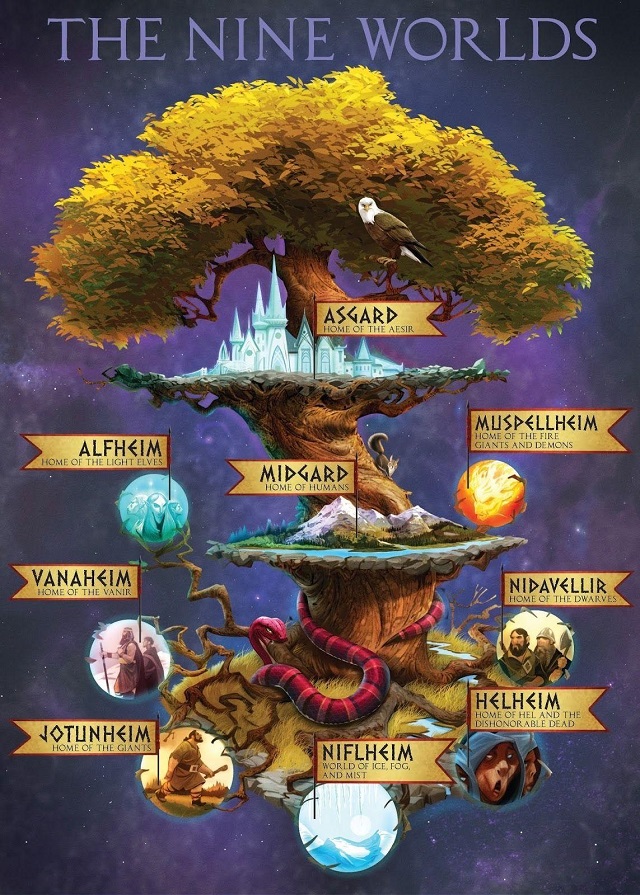
Image Copyright: Magnus Chase
The designers of Kaldheim used the Norse folklore as a starting point for the Kaldheim lore. In Kaldheim, there are ten worlds moving around the World Tree. Sometimes these realms will clash, causing bad stuff to happen. Kaldheim also features Gods, which shouldn’t impact Limited to much, except they all are pretty good dual-faced Mythics and rares.
If you’re lucky enough to live somewhere live events are possible and safe, dual-faced cards impact the draft process. If your neighbor opens a strong God, consider picking a card in a different color. Cooperating with your neighbors leads to the strongest decks.
Color Pair and World
Now, interesting as this may be, what could it teach us about Kaldheim as a Limited set? Each realm roughly translates to a color pair in Magic, which is probably why they added an additional realm.
Knowing in which realm a card was designed thematically can be a very useful starting point to envision how drafts decks shape up. In sets placed on Ravnica, the guilds are very different and there’s an actual watermark to show where cards belong, but Kaldheim doesn’t make it that easy.
White-Blue: Istfell, the Realm of Spirits
White-Blue has a Foretell theme. I’m looking forward to drafting decks with loads of Foretell. The mechanics seems very strong and a real headache for your opponent.
Red-White: Axgard, Home of the Dwarves and Their Equipments and Treasures
Red-White is usually aggressive and that still seems the case in Kaldheim.
Green-Blue: Littjara, Inhabited by Shapeshifters
This translates to the Changeling mechanic in Kaldheim. I don’t think you’ll see a lot of straight Green-Blue decks in the draft. Changelings can easily be played in other decks and I don’t see much payoff for playing all of them in the same deck.
Blue-Black: Karfell, Where We’ll Find the Viking Zombies Called Draugr
They have a Mill and Snow theme attached to them.
Black-Red: Immersturm, Land of Demons and Fire
Usual aggressive Black-Red chaos, with a lot of aggressive Boast cards.
White-Black: Starnheim, the Realm of Valkyries and Fallen Heroes
This translates to some Angels, but not a whole lot of synergy.
Red-Green: Gnottvold and Its Trolls
There seems to be a minor land destruction theme here, which usually isn’t viable in Limited. This doesn’t mean Red-Green won’t be viable however, big creatures can win games. Just don’t go for the land destruction.
Blue-Red: Surtland, Home of Fire and Frost Giants
Both Giants and Snow are an important theme in Kaldheim. We also have a minor Wizard theme here, which means using Changelings can play an important role in these decks.
Green-White: Bretagard, Where the Humans Live
There seem to be plenty of tokens and ways to pump them in Kaldheim, so I imagine Green-White decks will want to go wide.
Black-Green: Skemfar, a Combination of the Norse Alfheim and Svartalfheim, Home to the Elves
Elves have the most dedicated tribal theme in Kaldheim.
I used the uncommon Land cycle as illustrations, as these each contains the name of the realm. In Limited, don’t forget these lands essentially cost two of each color, as you can’t use the land itself to pay for it’s activated ability.
Tips for Limited
While I touched on implications for Limited in previous parts, I want to give you a list of five things I believe will give you an edge in the early days of Kaldheim Limited. Some of these are useful for every format, others apply specifically for Kaldheim.
Know Every Instant and Foretell Cards
If you want to win, don’t be the person surprised by new cards. Especially for commons and uncommons, knowing what to expect is very important.
Try Multicolored Decks
Earlier I focused on the color pairs as they align with the Ten Realms. With an entire cycle of common dual lands, I expect to see a lot of multicolored decks. It may be very obvious, but playing more colors allows you to play stronger cards. Kaldheim even has some 5-color payoffs, which I’m excited to make work. I expect multicolored decks to have a Snow theme more often.
Play Rares and Mythics
The rares and mythics in Kaldheim seem very strong. I see very few trash rares or mythics. Next to that, trying out rares and mythics in the early days of a format is something I always advocate. Seeing a card in action is often the easiest way to grasp how good it truly is and with rares and mythics you’ll have fewer chances to try it. So when in doubt, take the rare!
Be Greedy
Decks are less streamlined in the early days of a format, so you won’t get punished as badly if you play a more greedy deck. While I see some potential aggressive strategies, especially in Black-Red, I think being greedy will be advantageous.
Play a Lot and Have Fun!
This may sound a bit boring, but it’s honestly good advice. If you enjoy playing and play a lot, you’ll win more. Keep track of what works and learn from every game you play, but have fun while doing so.
Conclusion
I’ll probably play Kaldheim exclusively online, which saddens me a bit. I do hope we’ll get to play some high profile Limited tournaments, even if it’ll be online. Limited deserves to be played at the highest level. A new set always excites me from a Limited perspective: there’s so much to discover and try. I’ll enjoy it and I hope you’ll do so too.
This article was meant as an introduction and didn’t go into as much detail as some of you might have liked. I do plan to post all my early Kaldheim draft deck on my Twitter (@VierenPascal), so follow me there and don’t hesitate to ask me any question you might have.
Pascal Vieren (Twitter)


